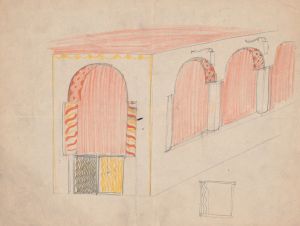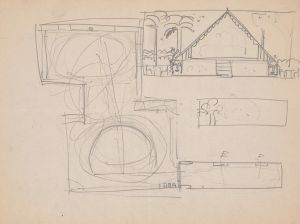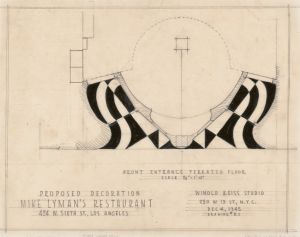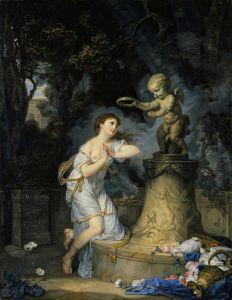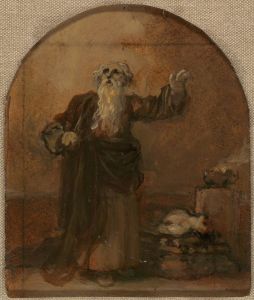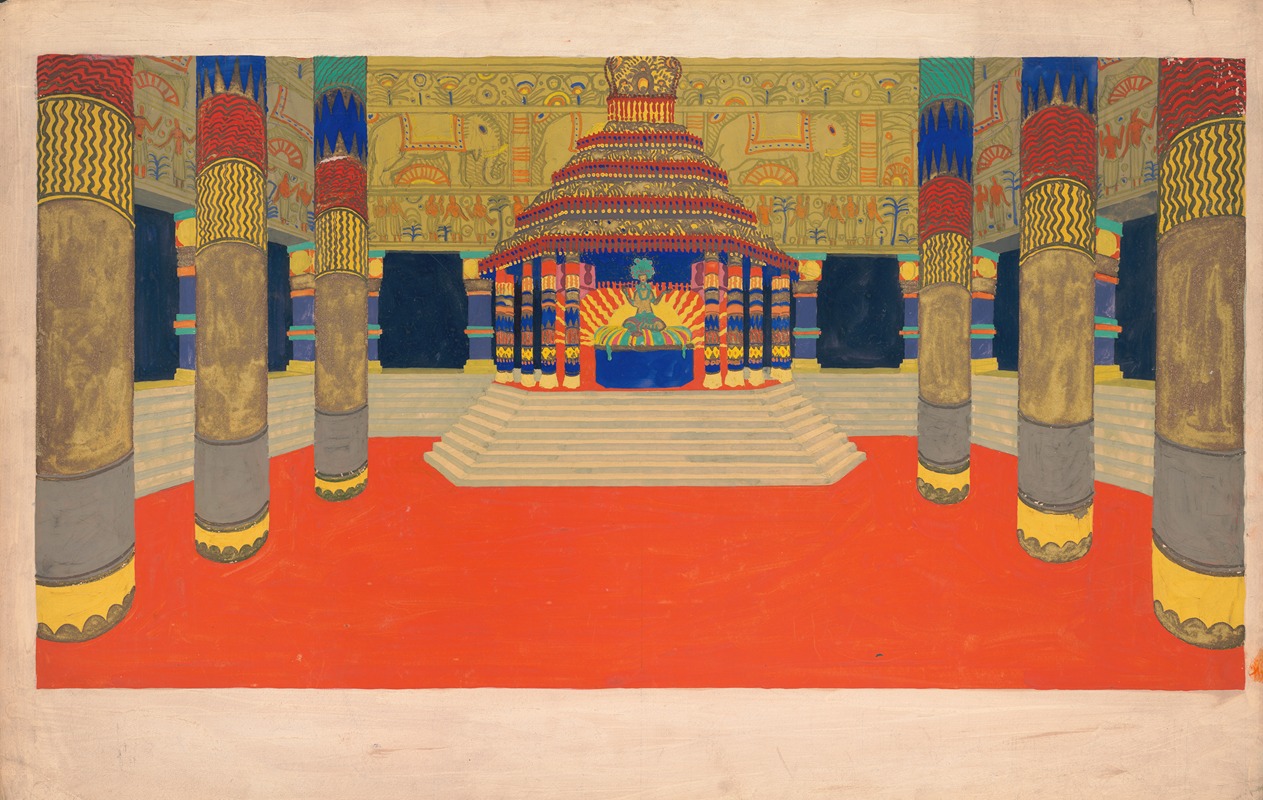
Design for unidentified interior.] [Drawing of columned hall with altar on a stepped plinth and decorative frieze featuring elephants
A hand-painted replica of Winold Reiss’s masterpiece Design for unidentified interior.] [Drawing of columned hall with altar on a stepped plinth and decorative frieze featuring elephants, meticulously crafted by professional artists to capture the true essence of the original. Each piece is created with museum-quality canvas and rare mineral pigments, carefully painted by experienced artists with delicate brushstrokes and rich, layered colors to perfectly recreate the texture of the original artwork. Unlike machine-printed reproductions, this hand-painted version brings the painting to life, infused with the artist’s emotions and skill in every stroke. Whether for personal collection or home decoration, it instantly elevates the artistic atmosphere of any space.
Winold Reiss was a German-American artist known for his work in portraiture, graphic design, and interior decoration. Born in 1886 in Karlsruhe, Germany, Reiss moved to the United States in 1913, where he became a prominent figure in the American art scene. He is particularly noted for his vibrant use of color and his ability to blend traditional European techniques with American themes and subjects.
The drawing titled "Design for unidentified interior" by Winold Reiss features a columned hall with an altar on a stepped plinth and a decorative frieze that includes elephants. This piece exemplifies Reiss's skill in interior design and his interest in incorporating diverse cultural elements into his work. The use of elephants in the frieze suggests an influence from Asian or African art, reflecting Reiss's fascination with non-Western cultures and his desire to create spaces that were both aesthetically pleasing and culturally rich.
Reiss's work often involved creating designs for public spaces, including hotels, restaurants, and other commercial interiors. His ability to integrate art and architecture made him a sought-after designer during the early to mid-20th century. One of his most notable projects was the design of the interiors for the Cincinnati Union Terminal, where he created a series of murals depicting the history of transportation. These murals are celebrated for their dynamic composition and vivid colors, characteristics that are also evident in his other works, including the drawing of the columned hall.
The drawing itself, while not tied to a specific project, showcases Reiss's architectural sensibilities and his attention to detail. The columned hall suggests a grand and formal space, possibly intended for ceremonial or religious purposes. The altar on a stepped plinth adds to the sense of importance and reverence, while the decorative frieze with elephants introduces an exotic element that would have appealed to contemporary tastes for the eclectic and the exotic.
Reiss's work was part of a broader movement in the early 20th century that sought to break away from traditional European styles and embrace a more global perspective. This movement was characterized by an interest in the art and design of other cultures, which artists like Reiss incorporated into their work to create innovative and diverse artistic expressions.
Throughout his career, Reiss remained committed to the idea that art should be accessible and integrated into everyday life. His designs for interiors were not just about decoration but about creating environments that inspired and uplifted those who inhabited them. The drawing of the columned hall is a testament to this philosophy, illustrating how Reiss used his artistic talents to transform spaces into works of art.
In summary, Winold Reiss's "Design for unidentified interior" is a reflection of his unique approach to art and design, blending cultural influences with architectural elements to create spaces that are both beautiful and meaningful. His work continues to be celebrated for its innovation and its ability to transcend cultural boundaries, making him a significant figure in the history of American art and design.






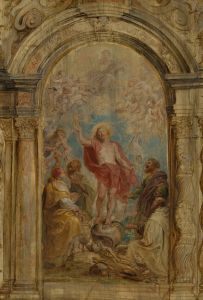

![Design drawing for a restaurant , Washington, D.C.] [Interior perspective of arcade and stage](/imgs/249272/s/winold-reiss-design-drawing-for-a-restaurant-washington-dc-interior-perspective-of-arcade-and-stage-55cc2361.jpg)
![Design for miscellaneous interior.] [Sketch of interior](/imgs/249290/s/winold-reiss-design-for-miscellaneous-interior-sketch-of-interior-38806ef7.jpg)
![Design for unidentified bedroom with canopy bed.] [Interior perspective elevation](/imgs/249297/s/winold-reiss-design-for-unidentified-bedroom-with-canopy-bed-interior-perspective-elevation-72bee5bc.jpg)
![Designs for restaurant and bar interiors with curving bars and stairways.] [Sketches for bars and restaurants](/imgs/249417/s/winold-reiss-designs-for-restaurant-and-bar-interiors-with-curving-bars-and-stairways-sketches-for-bars-and-restaurants-195836c8.jpg)
![Designs for theater with black-framed proscenium and boldly colored settings.] [Study for stage light wall decoration, possibly for Caf ̌Crillon …..](/imgs/249420/s/winold-reiss-designs-for-theater-with-blackframed-proscenium-and-boldly-colored-settings-study-for-stage-light-wall-decoration-possibly-for-caf-crillon--fccff049.jpg)
![Miscellaneous small sketches for inlaid table tops.] [Design with red and pink circular motif](/imgs/249441/s/winold-reiss-miscellaneous-small-sketches-for-inlaid-table-tops-design-with-red-and-pink-circular-motif-af0eedc4.jpg)
